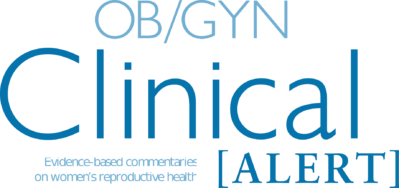
OB/GYN Clinical Alert – October 1, 2006
October 1, 2006
View Archives Issues
-
Cesarean Delivery Rates and Pregnancy Outcomes
The increased rate of cesarean section in the United States has been the subject of many editorials over the last 3 years and the very recent spurt in elective cesareans has triggered commentary varying from "this is unconscionable" to "why not?" -
Protective Effect of Salpingo-oophorectomy in At-Risk Women: Best Evidence Yet
It is well recognized that women in whom a BRCA1 or BRCA2 mutation is identified have an accelerated risk of breast and/or ovarian cancer. Known cases generally undergo heightened surveillance and consider prophylactic salpingo-oophorectomy to reduce their risk of either or both cancers. -
Vulvodynia: Keeping it in Mind
Do you remember in medical school when the professor taught us that unless you think of ectopic pregnancy, you couldn't make the diagnosis? The teaching point wasn't specifically for ectopics, but the generalized concept was that we should have a broad differential diagnosis when confronted by a clinical situation in order to maximize our success in making the correct diagnosis. -
Clomiphene and Dexamethasone
Elnashar and colleagues in Egypt performed a randomized trial assessing the efficacy of adding dexamethasone to clomiphene citrate treatment (up to 150 mg/day). The subjects were 80 women with polycystic ovaries who had demonstrated resistance to clomiphene induction of ovulation and who had normal levels of dehydroepiandrosterone sulfate (DHAS). -
GTD: Understanding the Spectrum of Normalcy
Persistent low levels of serum hCG in the absence of pregnancy or tumor is a perplexing problem that often leads to aggressive interventions including surgery and multi-agent cytotoxic chemotherapy. Given the low prevalence of true disease in these cases, it is not surprising these interventions provide little impact and may, and in fact, prove harmful. -
Who Follows Breast Cancer Screening Guidelines?
The authors reviewed 472 records representing 16 million preventive healthcare visits in women from 50 to 69 years of age in the 2000 National Ambulatory Medical Care Survey. OB/GYN physicians were more likely to follow breast cancer screening guidelines, but, overall, mid-level providers are more likely than medical doctors or osteopaths to adhere to guidelines. -
Pharmacology Watch: The Indictment of Pharma Industry Marketing Practices
TNF Blockers: Should You Be Concerned?; FDA Actions -
Clinical Briefs in Primary Care supplement
